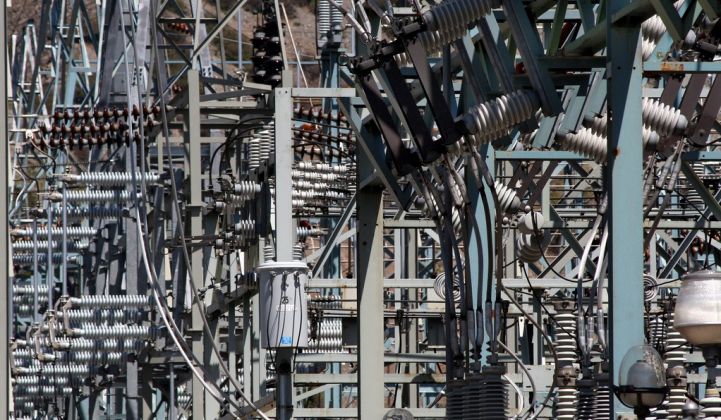It’s a truism in the smart grid industry that all of the disparate technologies that fall under the categories of smart meters, distribution automation, generation and transmission control systems, high-speed communications networks, and the rest will someday link into a bigger, smarter whole. But to what end?
A new survey, commissioned by IEEE and conducted by Zpryme, takes a crack at answering that question for three key technologies – energy storage, microgrids, and distributed generation technologies like wind, solar and onsite power.
Zpryme surveyed 460 energy industry executives from around the world, and came out with a lot of conclusions (you can download the report here [PDF].) Some are more predictable than others: to no one’s surprise, smart grid executives want to increase public- and private-sector funding for smart grid research and development.
Likewise, each of the three technologies in question will need energy management systems, distribution management systems and communications technologies on the grid to support them -- this constitutes the underlying ICT framework of the smart grid.
But the 32-page report also has a wealth of useful information on just where smart grid executives are focusing their attention when it comes to customers and business models to get these technologies out into the field. Notably, much of this new stuff will be outside the utility’s control and in the hands of the customer, in the form of “distributed energy systems,” to use the report’s parlance.
That doesn’t mean that utilities aren’t customers themselves of these three technologies: survey respondents expect nearly half the growth in distributed generation over the next five years to come from utilities -- more than residential at 46 percent, manufacturing at 42 percent, and government at 41 percent.
Still, that leaves a lot of new technologies in the hands of customers. That’s going to lead to new business models, revenue streams, and third-party arrangements that the monolithic utility industry hasn’t faced before, the report found. Utilities wanting to make it all work to their benefit will have to find ways to serve these new models and markets.
That’s going to make customers a critical part of this stage of development, Andres Carvallo, a member of the Zpryme smart grid advisory board and EVP and chief strategy officer of smart grid network management startup Proximetry, said in a Wednesday interview.
Carvallo noted a few surprises in the report, such as the relative lack of interest seen amongst smart grid executives for their technologies in the retail and construction businesses. He also saw less interest in developing countries and economies than he expected. Broadly speaking, Europe leads the world in distributed generation and microgrids, according to survey respondents -- not surprising, given the continent’s wind and solar resources and goals -- while North America has more energy storage technology.
Microgrids, Storage, Wind and Solar
On the microgrid front, while the military has been a big backer of the technology, it turns out that smart grid execs see hospitals and health care as even bigger future customers, according to the survey. That makes sense, of course -- hospitals have required constant backup power for decades to maintain critical life support systems, making them natural candidates for microgrid-like systems.
At the same time, microgrids also need a lot of work on the standards front (something IEEE has been intimately involved in via its 1547 standard development work) before they can be widely adopted into the grid. In the meantime, real live microgrids are up and running today, whether they’re on military bases, data centers or remote telecommunications sites, but they’re not linked to the smart grid in any standardized way.
For grid-scale energy storage, the key barrier remains high cost, according to two-thirds of survey respondents. Traditional pumped hydro projects, while efficient, cost billions and are limited to convenient canyons and rivers that can be dammed. Batteries, in the meantime, are still quite expensive compared to just bringing more power to the grid, although they can pencil out in key uses, like relieving stressed-out grid corridors that would otherwise need to be upgraded.
At the same time, utilities face growing challenges in managing intermittent renewables and peak power loads, which, along with falling battery prices, could expand the market. Overall, one-third of executives surveyed said the global grid energy storage market would increase by 1 to 5 gigawatts over the next five years, while another third put the increase in 5.1 to 10 gigawatt range, and smaller numbers predicting even greater growth.
The last category, distributed generation, bears close watching, because it’s a category that’s far less under the sway of utility control. Whether via mandate or free-market forces, utilities are seeing more and more intermittent wind and solar power resources being linked to their grids -- and being asked to handle that unpredictable, potentially destabilizing flow of power.
Survey respondents were all over the map in predicting how much new distributed generation capacity was coming. Just over a quarter predicted global distributed generation capacity would grow by 10.1 to 15 gigawatts over the next five years. Another 22 percent predicted less growth, of 5.1 to 10 gigawatts over the next five years -- but another 21 percent said distributed resources could boom by more than 20 gigawatts by 2017.



